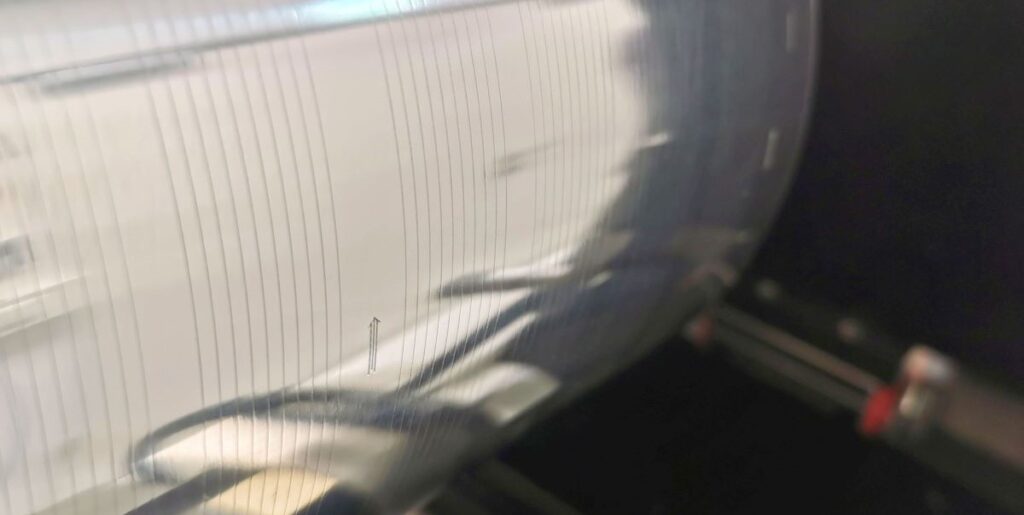Researchers from Germany’s Fraunhofer Institute for Solar Energy Systems (Fraunhofer ISE) have used indirect gravure printing for the front metallization of silicon heterojunction (SHJ) solar cells, reducing silver consumption at cycle times of 0.5 seconds per cell and achieving a conversion efficiency was achieved of up to 20.7%.
“A major advantage of rotary printing techniques, such as rotogravure but also rotary screen printing and flexographic printing, is the possibility of greatly reducing the cycle time per wafer and thus increasing the throughput per hour compared to the most modern metallization methods,” said research leader Jörg Schube pv magazine.
The researchers noted that efficiency results were 1.7% lower compared to the screen-printed reference, but cycle time was shorter.
The aim of the research is to find better metallization techniques for silicon solar cells in the light of PV industry technological roadmapwhich sees more silicon heterojunction (SHJ) cells and silicon-based tandem devices in the future.
The goal is also to develop low-temperature metallization processes that use less silver but also operate at high throughput levels. For example, the researchers noted that throughput must increase from 4,000 wafers per hour per lane to 9,500 wafers per hour per lane, which corresponds to cycle times of 0.9 seconds and 0.5 seconds per cell, respectively.
Such limitations point to a metallization technique based on technologies such as parallel distribution, inkjet printing, rotary printing or FlexTrail, the researchers said. FlexTrail is a new printing technology developed by Fraunhofer ISE.
The Fraunhofer ISE team decided to focus on a rotary printing technique known as indirect gravure printing – a technology used in high-volume, high-quality magazine and catalog printing or in the packaging industry.
The team used industrial SHJ precursors for the experiment and screen printed on the backs of fingers. The indirect intaglio printing was applied to the front of the samples with intaglio printing widths of 50 μm and 80 μm. In addition to the gravure width, the number of ink applications on the transfer cylinder was also varied. A reference screen printing device was also manufactured.
All samples were then annealed, laser cut and mechanically split into half cells, followed by IV and electroluminescence testing, busbar printing and drying steps. Characterization included confocal microscopy, scanning electron microscope (SEM), and four-point probe measurements.
The samples made with the champion indirect intaglio printing process had an average width of 65 μm and an average finger height of 5 μm. When used for front metallization, the SHJ solar cells had a conversion efficiency of up to 20.7%, which equates to 1.7% [absolute] less than the reference front, screen-printed solar cells, but the cycle time was reduced, the team pointed out.
The team noted that, to their knowledge, “these are the highly efficient SHJ solar cells with intaglio metallization reported to date.” It added that even without optimization, the Champion indirect gravure printing process “can meet the demand for increasing throughput” and potentially reduce costs in manufacturing PV systems.
Schube said the team was amazed at how easily they were able to achieve “significant” height of the printed metal contact points right at the start of using indirect gravure printing. “By using a suitable production platform, cycle times of 0.5 seconds per cell, and even lower, are possible. This high throughput potential, together with the durability of gravure sleeves, can lead to a major advantage of this printing technique over state-of-the-art metallization systems,” he explains.
In subsequent solar cell simulations, the researchers discovered that without further process optimization, indirect gravure printing can be applied as back metallization for SHJ solar cells with only a 0.1% loss in conversion efficiency compared to screen printing.
However, the researchers noted that there is room for improvement with this variation of rotary printing. They specifically mentioned that finger resistance and contact resistance at the interface between contact and indium tin oxide can be reduced by “adjusting the ink formulation and annealing conditions.” Furthermore, they noted that better machine alignment could improve the homogeneity of the contact fingers, and that an optimized gravure design could reduce the finger width while keeping the finger height at 5 μm or more.
The team claimed that although they experimented with SHJ devices, the results can be transferred to other high-efficiency wafer-based cell concepts that require metallization at low temperatures, such as perovskite-silicon tandem devices.
The research team included scientists from the Continental Center for Functional Printing Technologies (CFPT), an R&D unit of automotive industry supplier Continental, and intaglio printing manufacturer Saxon Walzengravur (SWG).
His work is described in “High-throughput indirect gravure printing applied to low-temperature metallization of silicon-based high-efficiency solar cells,” published in Energy Technology. “The published results are very encouraging for the entire team to continue developing this innovative metallization approach. The next steps are to reduce the width of the printed contacts and optimize the design of the metal grid layout,” said Schube, looking ahead.
This content is copyrighted and may not be reused. If you would like to collaborate with us and reuse some of our content, please contact: editors@pv-magazine.com.

